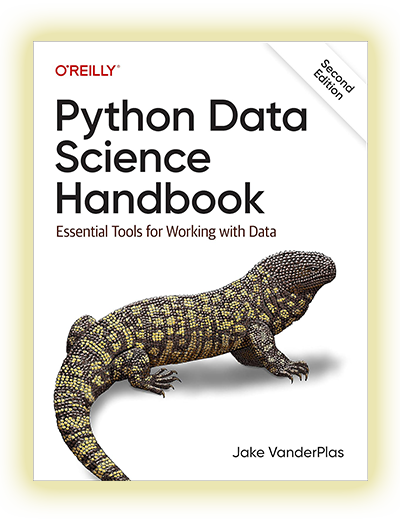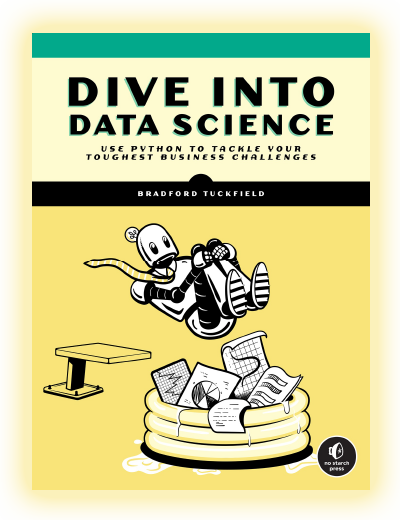I’m Jason Nguyen, a Data Scientist with a Master’s degree in Statistics from the University of Toronto. Since 2019, I’ve worked at the intersection of data engineering, machine learning, and business intelligence - helping companies turn raw data into actionable insight. My experience spans multiple industries including fintech, e-commerce, and healthcare analytics.
Data science is a fast-evolving field where clarity matters more than complexity. I write book reviews to guide both beginners and professionals toward trustworthy, practical, and up-to-date resources. Not every book on data science is useful - some are too theoretical, others are outdated or ignore real-world workflows. My goal is to recommend Data Science books that combine statistical rigor, coding fluency, and data storytelling - all key elements in building a data-driven mindset.
Writing Code That Lasts - My Approach
I believe in delivering insight, not just models. Data science is ultimately about solving problems - not chasing the latest algorithm. My approach is pragmatic, reproducible, and stakeholder-focused.
- Start with the problem, not the tool
- Clean data beats fancy models
- Simplicity and interpretability matter
- Document your assumptions and pipelines
- Test hypotheses, not hunches
- Think about how insights will be used
- Visualize to communicate, not to decorate
Data-Driven Products: How I Apply Data Science at Scale
I’ve designed data pipelines, built predictive models, and developed data products in both agile startups and enterprise environments. I combine Python, SQL, and statistics to deliver solutions that are robust, explainable, and business-aligned. My highlighted projects:
ChurnPredict – Subscription Risk Modeling
Developed a logistic regression and XGBoost pipeline to identify users at risk of cancellation. Implemented automated feature generation, SHAP-based model explanation, and real-time dashboards in Streamlit.
MedIQ – Healthcare Cost Forecasting
Built a time series model (Prophet, LSTM) to predict monthly expenditures for hospitals. Integrated patient-level data, handled missing values with advanced imputation, and communicated uncertainty to non-technical stakeholders.
NLPlytics – Text Classification & Sentiment Analysis
Built a pipeline for text preprocessing, feature extraction (TF-IDF, embeddings), and classification (logistic regression, BERT). Deployed via FastAPI and tracked model performance in MLflow.
The Data Science Stack I Use to Build Models That Drive Real Business Impact
As a Data Scientist, I specialize in turning raw data into actionable insights and predictive systems. My work combines statistics, programming, and domain knowledge to build models that support product decisions, automate processes, and uncover opportunities. I’m passionate about data quality, clear communication, and building pipelines that scale from prototype to production.
Here’s a breakdown of the technologies and tools I rely on daily - and how I use them in practical data science workflows:
| Technology / Tool | Using Since | How I Use It in Practice |
| Python (Pandas, NumPy) | 2020 | My go-to language for data wrangling, exploration, and feature engineering. I use Pandas for cleaning, reshaping, and merging large datasets. |
| Scikit-learn | 2021 | I apply classical ML algorithms (regression, trees, clustering) with cross-validation and pipeline strategies for rapid experimentation and baseline modeling. |
| XGBoost / LightGBM | 2022 | I use these libraries for high-performance tabular modeling, including hyperparameter tuning and model interpretation in structured data problems. |
| SQL (PostgreSQL, BigQuery) | 2019 | I write complex queries for reporting, feature generation, and data validation - often as part of pre-modeling data pipelines. |
| Jupyter Notebooks | 2020 | Used for exploratory data analysis (EDA), visualization, and communication of insights to stakeholders with reproducible code and visuals. |
| Matplotlib / Seaborn / Plotly | 2023 | I use data visualizations to spot patterns, explain trends, and make model results understandable across technical and non-technical audiences. |
| MLflow | 2024 | I track model experiments, performance metrics, and artifact versions - essential for collaborative model development and deployment traceability. |
| Airflow / Prefect | 2024 | I orchestrate data pipelines and ML workflows, scheduling data ingestion, model training, and retraining tasks in production environments. |
Thinking About Data Science? Read This First
- Read "Python for Data Science For Dummies" by John Paul Mueller and Luca Massaron
- Learn SQL - it's still the foundation of analytics
- Focus on exploratory data analysis (EDA) first
- Don’t skip statistics - it helps you think clearly
- Write documentation like someone else will use your work
Want to crack Data Science interview? Download the PDF with Data Science Interview Questions and Answers – and use it as your trusted guide for Data Science interview preparation.
Ask the Developer: Data Science FAQ
How do I start learning data science with no background?
Begin with Python and basic statistics. Use free datasets (e.g., Kaggle, UCI) to practice cleaning, exploring, and visualizing data. Follow beginner-friendly books like Data Science from Scratch and supplement with tutorials. Don’t try to learn everything at once - focus on understanding one tool at a time and apply it to small, real problems.
What should I look for in a good data science book?
The best books offer hands-on experience, code examples, and clear explanations of statistical concepts. I recommend books that focus on the end-to-end process - not just modeling, but also data prep, evaluation, and communication. Bonus points for books that cover common pitfalls and include real datasets.
Do I need to learn deep learning to be a data scientist?
Not necessarily. Deep learning is powerful, but most business problems are solved with classic methods like regression, tree-based models, and clustering. Learn deep learning if you’re working in NLP, computer vision, or large-scale unstructured data - otherwise, focus on core machine learning first.
What tools should I master as a beginner?
Start with Python, Pandas, and Scikit-learn. Then learn SQL - deeply. Learn to visualize with Matplotlib or Seaborn. Once you’re confident, explore Jupyter Notebooks, Git, and APIs. Avoid jumping into advanced tools before you're fluent in the basics.




